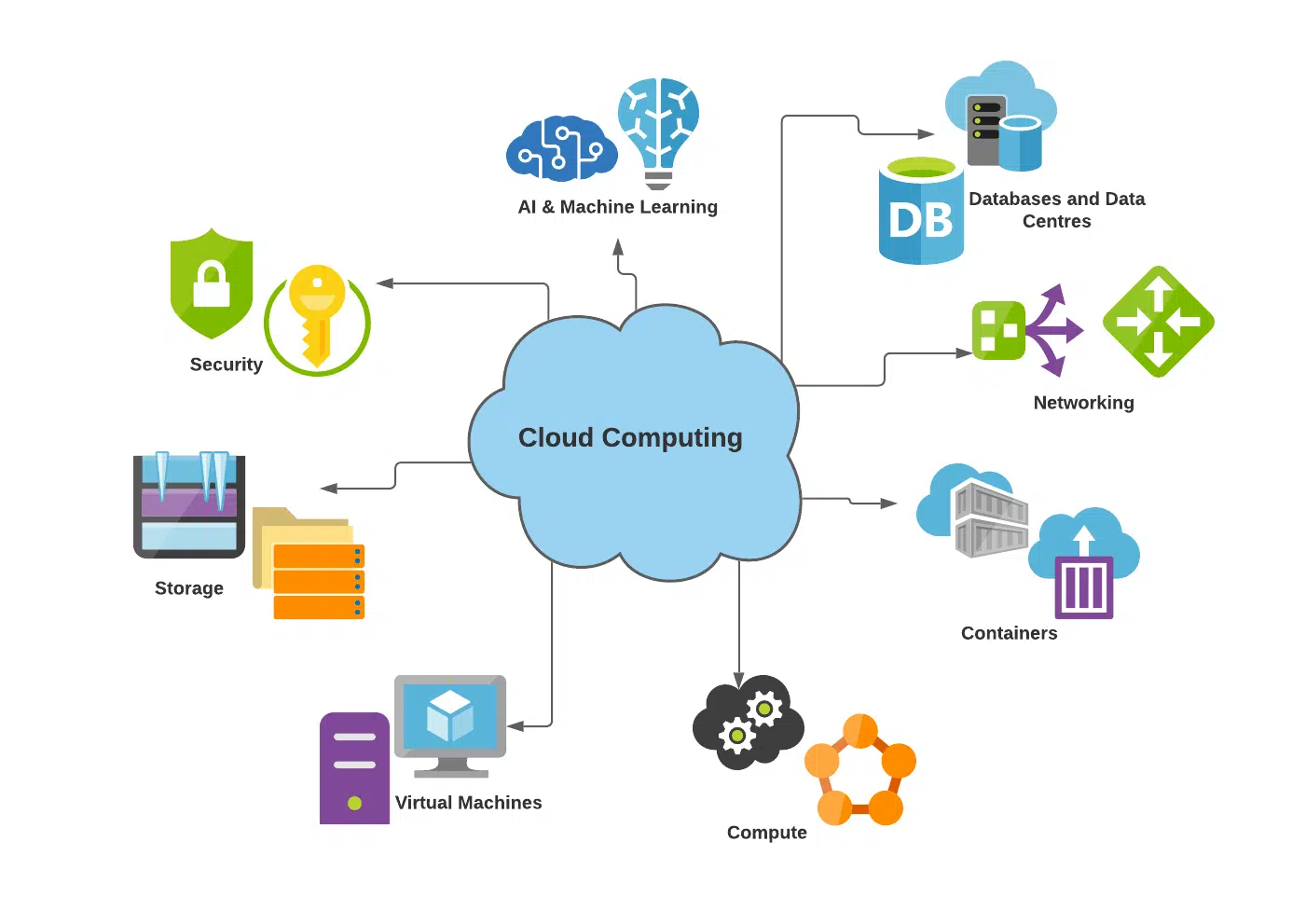
High-performance cloud computing has revolutionized how businesses, researchers, and individuals access and utilize computing resources. Traditionally, accessing powerful computing infrastructure required significant capital investment, technical expertise, and physical infrastructure. However, with the rise of cloud computing, organizations of all sizes can harness the power of advanced computing capabilities on demand, enabling innovation, scalability, and cost-efficiency. This comprehensive guide explores how high-performance cloud computing democratizes access to powerful computing resources, empowering users to unlock new possibilities and drive transformative change across industries.
Evolution of Cloud Computing:
Cloud computing has evolved from a buzzword to a mainstream technology paradigm, offering a flexible and scalable model for delivering computing resources over the internet. The evolution of cloud computing can be categorized into three main phases:
- Infrastructure as a Service (IaaS): The initial phase of cloud computing focused on providing on-demand virtualized computing infrastructure, storage, and networking resources, enabling users to deploy and manage virtual machines and storage instances.
- Platform as a Service (PaaS): The second phase introduced higher-level cloud services, such as application development platforms, databases, and middleware, offering developers a platform to build, deploy, and scale applications without managing the underlying infrastructure.
- Software as a Service (SaaS): The third phase saw the emergence of cloud-based software applications delivered over the internet, eliminating the need for users to install, maintain, and update software locally.
Understanding High-Performance Cloud Computing:
High-performance cloud computing extends the capabilities of traditional cloud computing by offering enhanced processing power, memory, and networking capabilities for demanding workloads such as scientific simulations, data analytics, and artificial intelligence (AI). Key features of high-performance cloud computing include:
Advanced Processing Units: Access to specialized hardware accelerators, such as Graphics Processing Units (GPUs), Field-Programmable Gate Arrays (FPGAs), and Tensor Processing Units (TPUs), optimized for parallel processing and AI workloads.
High-Speed Networking: Low-latency, high-bandwidth networking infrastructure, enabling fast data transfer and communication between virtual machines, storage systems, and external data sources.
Scalable Storage Solutions: High-performance, scalable storage solutions, including object storage, block storage, and file systems, are designed to handle large volumes of data and support data-intensive applications.
Benefits of High-Performance Cloud Computing:
1. Democratized Access:
- Accessibility:High-performance cloud computing platforms provide easy access to powerful computing resources from anywhere with an internet connection, eliminating geographical barriers and enabling collaboration among distributed teams.
- Affordability:Cloud computing offers a pay-as-you-go pricing model, allowing users to pay only for the resources they consume on demand without needing upfront capital investment or long-term commitments.
- Resource Flexibility:Users can dynamically scale computing resources up or down based on workload demands, optimizing resource utilization and minimizing costs without overprovisioning or underutilization.
2. Scalability and Elasticity:
- On-Demand Scalability:High-performance cloud computing platforms can rapidly provision additional computing resources in response to changing demands, ensuring performance and availability during peak periods.
- Elasticity:Cloud computing platforms automatically adjust resource allocation based on workload patterns, scaling resources up or down dynamically to match demand fluctuations and maintain optimal performance.
3. Performance and Efficiency:
- Enhanced Performance:High-performance cloud computing platforms leverage specialized hardware accelerators and optimized networking infrastructure to deliver superior performance for compute-intensive workloads, such as AI, machine learning, and scientific simulations.
- Efficiency:Cloud computing enables resource consolidation, virtualization, and automation, maximizing resource utilization and energy efficiency while minimizing operational overhead and environmental impact.
4. Innovation and Collaboration:
- Accelerated Innovation:High-performance cloud computing empowers researchers, scientists, and developers to accelerate innovation by providing access to advanced computing capabilities for experimentation, prototyping, and simulation.
- Collaborative Research:Cloud-based collaboration tools and shared computing environments enable interdisciplinary collaboration and knowledge sharing among researchers, fostering innovation and discovery in diverse fields.
Use Cases and Applications:
High-performance cloud computing finds applications across various industries and domains, including:
- Scientific Research: Conducting complex simulations, computational modelling, and data analysis in fields such as physics, chemistry, biology, and climate science.
- Engineering and Design: Performing finite element analysis (FEA), computational fluid dynamics (CFD), and structural simulations for product design, optimization, and testing.
- Artificial Intelligence and Machine Learning: Training and deploying AI models for image recognition, natural language processing (NLP), recommendation systems, and autonomous vehicles.
- Financial Services: Analyzing vast datasets, modelling risk, and executing algorithmic trading strategies in high-frequency (HFT) environments.
- Healthcare and Life Sciences: Analyzing genomic data, medical imaging, and drug discovery processes to accelerate research, diagnosis, and treatment development.
- Media and Entertainment: Rendering high-resolution visual effects, 3D animations, and virtual reality (VR) experiences for film, gaming, and immersive entertainment applications.
Future Trends and Innovations:
- Edge Computing: Integrating high-performance computing capabilities at the network edge to support real-time processing, low-latency applications, and data-intensive IoT devices.
- Quantum Computing: Exploration of quantum computing technologies to solve computationally complex problems, such as cryptography, optimization, and material science.
- Hybrid Cloud Architectures: Adopting hybrid cloud architectures combines on-premises infrastructure with public and private cloud services to achieve flexibility, scalability, and data sovereignty.
- Serverless Computing: The evolution of serverless computing platforms offers event-driven, scalable, cost-effective execution environments for application development and deployment.
High-performance cloud computing represents a paradigm shift in the accessibility, scalability, and efficiency of computing resources, democratizing access to powerful computing capabilities for businesses, researchers, and innovators worldwide. Organizations can accelerate innovation, drive efficiency, and unlock new opportunities across industries and domains by leveraging high-performance cloud computing platforms. As technology evolves and new advancements emerge, the democratization of high-performance computing resources will play a pivotal role in shaping the future of digital transformation, scientific discovery, and societal progress.



